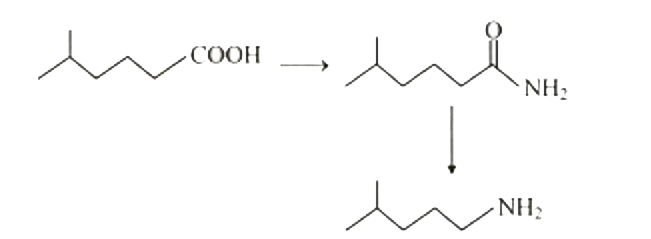Clemmensen reduction
Step-by-Step Solution for Clemmensen Reduction
Step 1: Understanding the Reaction Conditions
- Clemmensen reduction is a chemical reaction that reduces aldehydes and ketones to alkanes.
- The reaction requires zinc amalgam (Zn/Hg) and concentrated hydrochloric acid (HCl).
Step 2: Starting Material
- Consider a generic aldehyde or ketone represented as R1C(=O)R2, where R1 and R2 can be hydrogen or hydrocarbon groups.
Step 3: Formation of Carbocation
- The zinc metal loses electrons to form Zn²⁺ ions.
- The concentrated HCl dissociates to provide H⁺ ions.
- The carbonyl oxygen of the aldehyde or ketone donates a lone pair to the H⁺ ion, forming a positively charged oxonium ion (R1C(OH)R2).
Step 4: Elimination of Water
- The oxonium ion undergoes dehydration, where the hydroxyl group (OH) loses a proton and leaves as water (H₂O).
- This results in the formation of a carbocation (R1C⁺R2).
Step 5: Reduction to Alkane
- The carbocation formed can then gain electrons from the zinc, resulting in the formation of an alkane (R1CH2R2).
- The overall reaction converts the carbonyl compound into an alkane.
Step 6: Final Product
- The final product of the Clemmensen reduction is an alkane, which is represented as R1CH2R2.
Summary of the Reaction
- The Clemmensen reduction effectively transforms aldehydes and ketones into alkanes using zinc amalgam and concentrated HCl, with the mechanism involving the formation of a carbocation and subsequent reduction.
---
- Clemmensen reduction is a chemical reaction that reduces aldehydes and ketones to alkanes.
- The reaction requires zinc amalgam (Zn/Hg) and concentrated hydrochloric acid (HCl).
- Consider a generic aldehyde or ketone represented as R1C(=O)R2, where R1 and R2 can be hydrogen or hydrocarbon groups.
- The zinc metal loses electrons to form Zn²⁺ ions.
- The concentrated HCl dissociates to provide H⁺ ions.
- The carbonyl oxygen of the aldehyde or ketone donates a lone pair to the H⁺ ion, forming a positively charged oxonium ion (R1C(OH)R2).
- The oxonium ion undergoes dehydration, where the hydroxyl group (OH) loses a proton and leaves as water (H₂O).
- This results in the formation of a carbocation (R1C⁺R2).
- The carbocation formed can then gain electrons from the zinc, resulting in the formation of an alkane (R1CH2R2).
- The overall reaction converts the carbonyl compound into an alkane.
- The final product of the Clemmensen reduction is an alkane, which is represented as R1CH2R2.
- The Clemmensen reduction effectively transforms aldehydes and ketones into alkanes using zinc amalgam and concentrated HCl, with the mechanism involving the formation of a carbocation and subsequent reduction.
Topper's Solved these Questions
Similar Questions
An alkene (A) ozonolysis gives a mixture of two carbonyl compounds. Mixture on Clemmensen reduction gives just one alkane (B). (B) is the lowest alkane which in pure form can not be prepared by standard Wurtz method. (A) is
View SolutionConsider the following conversion :

Amongst the following, how many methods can be used in any one of steps involved in the mentioned conversion?
i. Hoffmann bromamide degradation
ii. Gabriel phthalimide synthesis
iii. Sandmeyer reaction
iv. Clemmensen reduction
v. Mendius reductionView Solution(a) Illustrate the following name reactions:
(i) Cannizzaro's reaction.
(ii) Clemmensen reduction
(b) How would you obtain the following:
(i) But-2-enal from ethanal.
(ii) Butanoic acid from butanol.
(iii) Benzoic acid from ethylbenzene.View SolutionIllustrate the following name reactions giving suitable exaple in each case :
(i) Clemmensen reduction
(ii) Hell-Volhard-Zelinsky reaction.
(b) How are the following conversions carried out ?
(i) Ethylcyanide to ethanoic acid
(ii) Butanol to Butanoic acid
(iii) Benzoic acid to m-bromobenzoic acidView SolutionA compound has molecular formula C6H12O. It does not reduce Tollens or Fehling's reagent, but gives a crystalline derivative with 2,4-dinitro-phenyl hydrazine. With alkali and I2, it gives yellow solid with a medicinal odour. Clemmensen reduction converts it to 2-methylpentane. The structure formula of the compound is most likely to be:
View Solution(a) Illustrate the following name reactions by giving example :
(i) Cannizzaro's reaction
(ii) Clemmensen reduction
(b) An organic compound A contains 69.77% carbon , 11.63 % hydrogen and rest oxygen .
The molecular mass of the compound is 86. it does not reduce Tollen's reagent but forms an addition compound with sodium hydrogen sulphite and give positive iodoform test.
On vigorous oxidation it gives ethanoic and propanoic acid. Derive the possible structure of compound A .View SolutionClemmensen reduction
View SolutionClemmensen reduction
View SolutionClemmensen's reduction will convert cyclohexanone into:
View SolutionIn Clemmensen's reduction , the catalyst used is
View Solution
